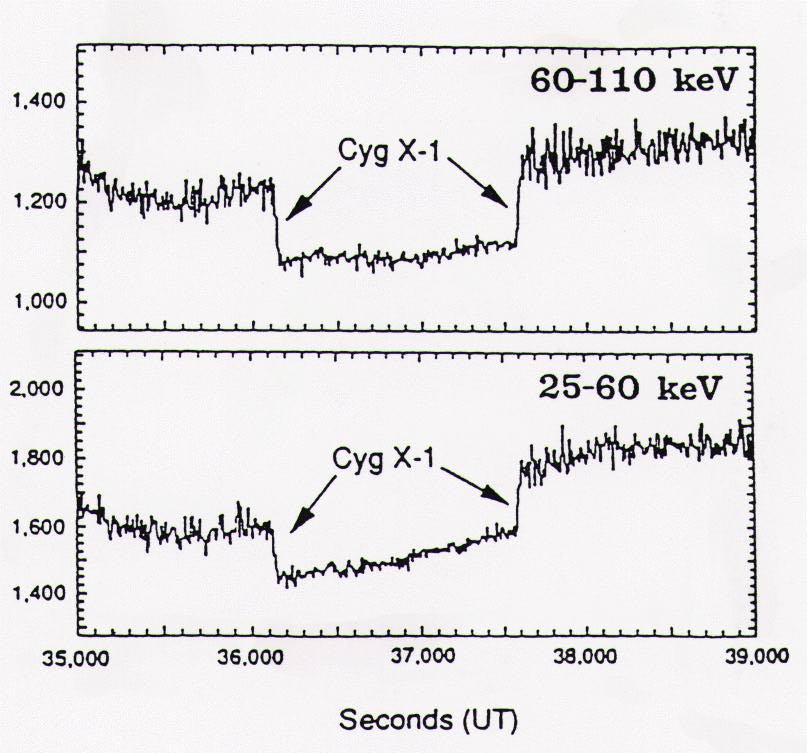BATSE Occultation Data for Cygnus X-1 (Credit: A. Harmon (NASA/MSFC) Click here for jpg version In addition to its capabilities for detection of gamma-ray bursts and high-energy periodic phenomena, BATSE monitors the sky continuously in the energy region above 20 keV via the "Earth-occultation" technique. Many transients, with turn-on time scales from a day to a few weeks, have been discovered and major flares from known objects have been recorded using this method. This has in turn led to numerous "target-of-opportunity" studies of transient objects using the CGRO pointed instruments and other observatories. The Earth-occultation technique for flux determination is demonstrated in this figure which shows occultation "steps" due to the passage of Cygnus X-1 through the Earth's disk as seen by the satellite. The magnitude of the intensity decrease in the individual detector channels allows the source flux to be determined. To monitor weaker sources the sensitivity of the method is enhanced by combining data from multiple orbits. About 60 hard-X-ray sources are regularly monitored in this manner. -Peter Leonard
IMAGES |
By Mission |
Stars |
HEASARC Home | Observatories | Archive | Calibration | Software | Tools | Students/Teachers/Public Last modified: Thursday, 26-Jun-2003 13:48:45 EDT |

